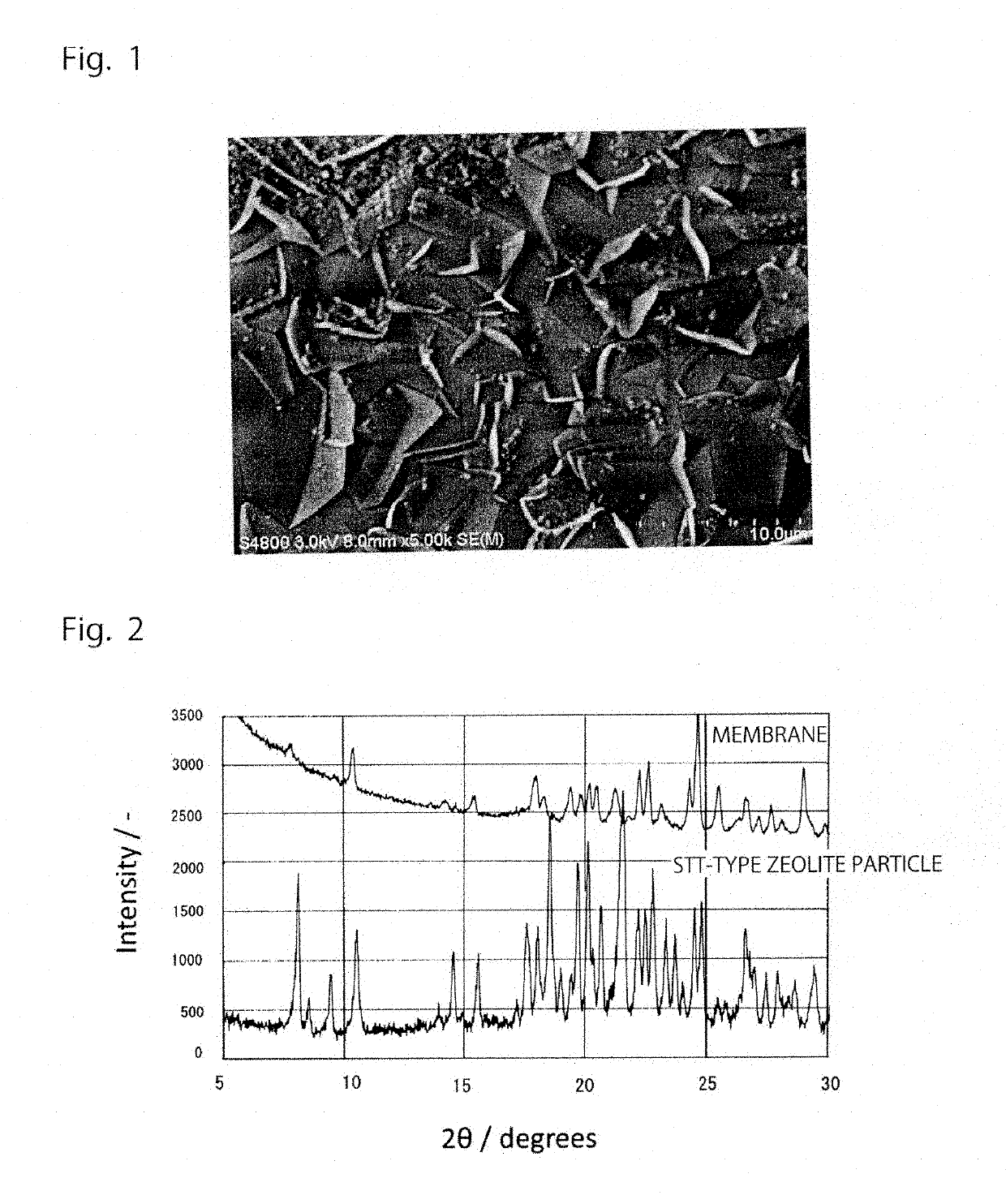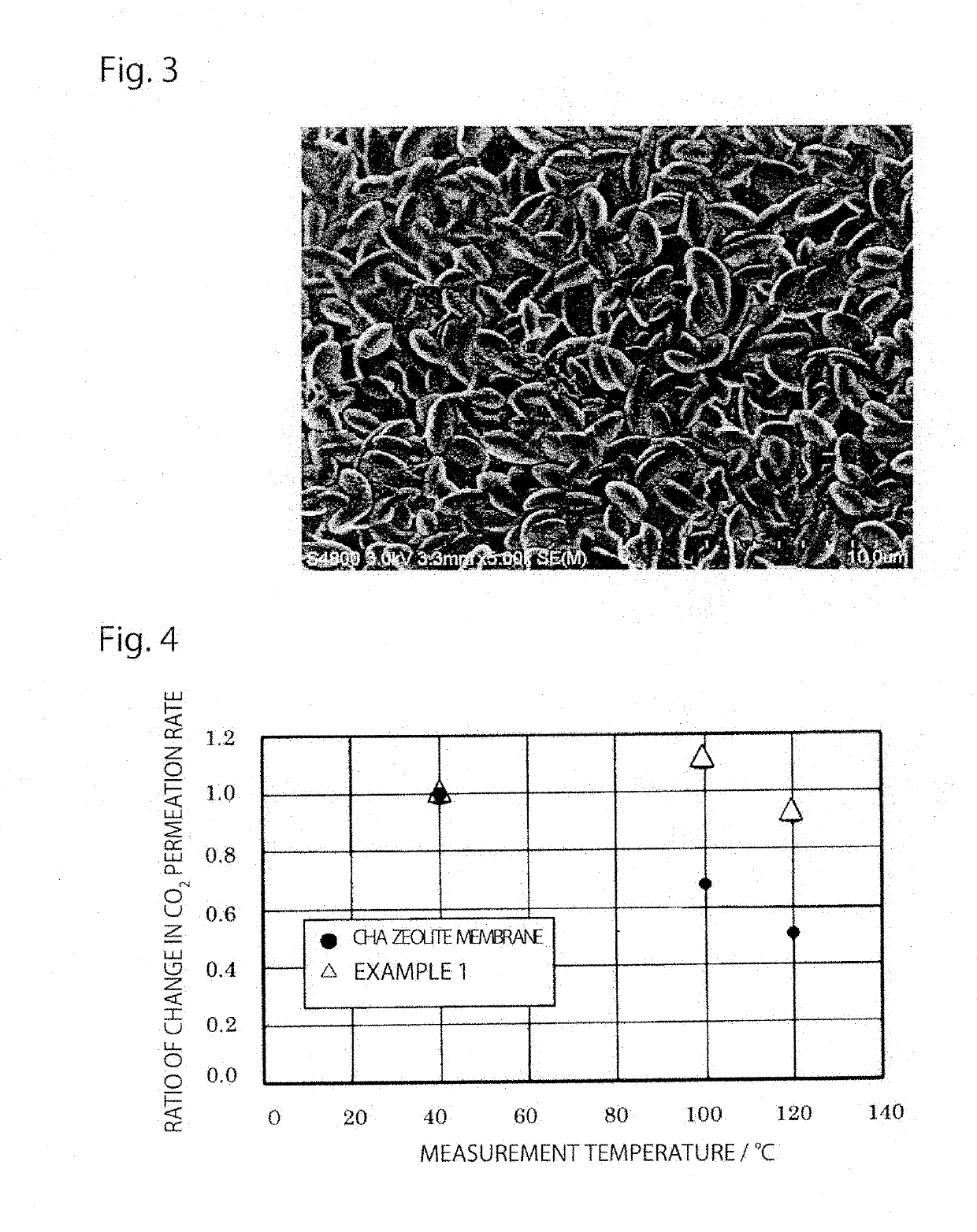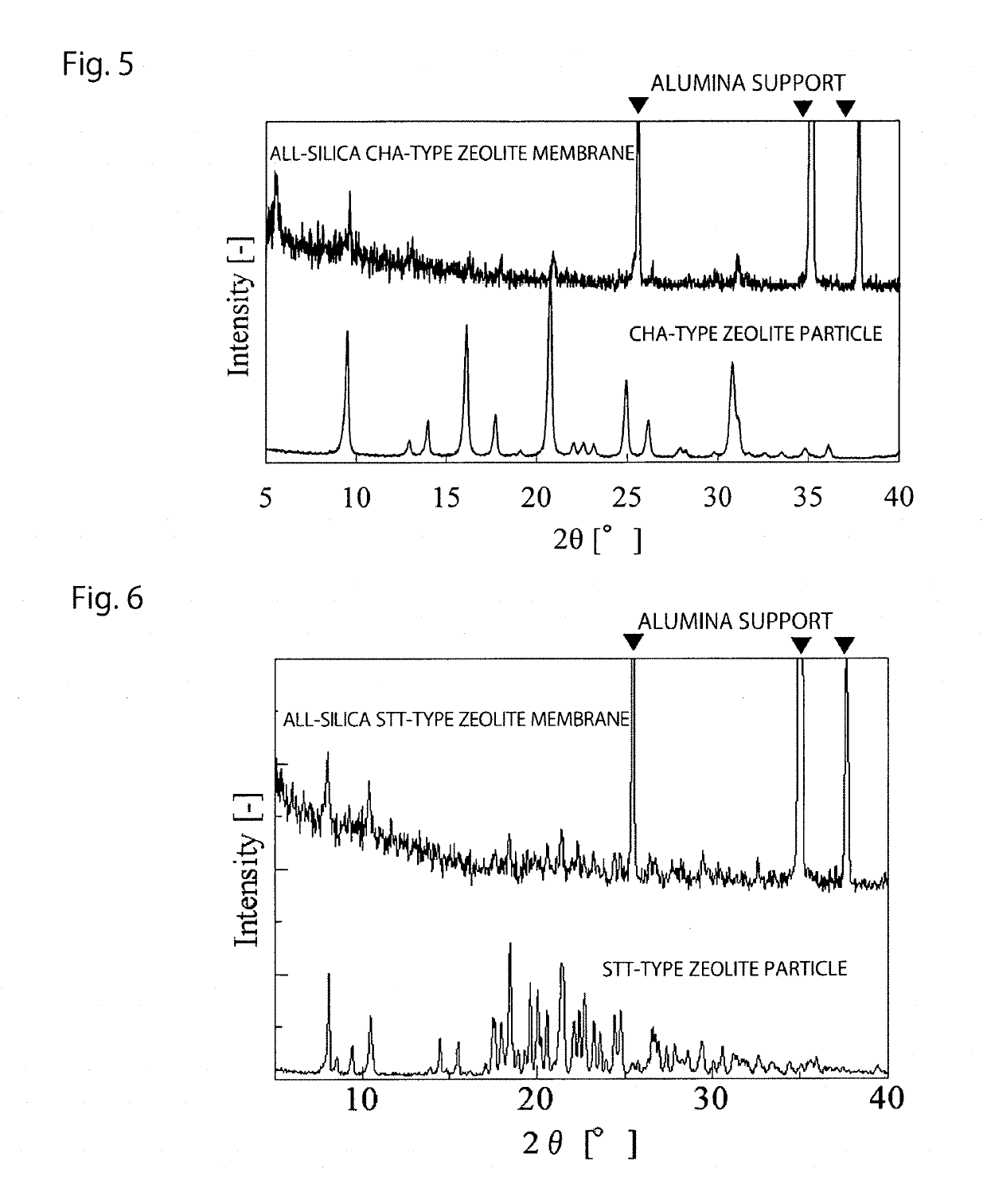Zeolite separation membrane and production method therefor
a separation membrane and zeolite technology, applied in the direction of silica-polymorphs, separation processes, silicon compounds, etc., can solve the problems of zeolite not crystallizing (solidifying), stt-type and cha-type zeolite separation membranes for separating methane or the like or carbon dioxide or the like cannot be industrialized, and achieve the effect of reducing the processing amount and safe production
- Summary
- Abstract
- Description
- Claims
- Application Information
AI Technical Summary
Benefits of technology
Problems solved by technology
Method used
Image
Examples
example 1
Production of All-Silica STT-type Zeolite Separation Membrane
(Preparation of Seed Crystal)
[0063]In a beaker, TMAdaOH (organic template), TEOS (silica source), and water were mixed, and stirred for 12 hours, whereby TEOS was hydrolyzed. Thereafter, the mixture was heated to 150° C., whereby generated water and ethanol were completely evaporated. To the solid remaining in the beaker, hydrofluoric acid and ion exchanged water were added and stirred. The molar formulation of the respective materials is as follows: SiO2:TMAdaOH:HF:H2O=1:0.5:0.5:7.5. After stirring, the gel was transferred to an autoclave made of Teflon, and hydrothermal synthesis was performed at 150° C. for 3.5 days. The autoclave was cooled, and the gel in the Teflon inner cylinder was washed with ion exchanged water, filtered, and dried under reduced pressure.
[0064]The thus prepared all-silica STT-type zeolite seed crystal was applied onto the surface of a porous alumina support (outer diameter: 3 mm, length: about 25...
example 2
Production of All-Silica STT-type Zeolite Separation Membrane
[0068]FIG. 3 shows an electron micrograph of a surface of an all-silica zeolite membrane of Example 2 synthesized by shortening the hydrothermal synthesis time.
[0069]A membrane was synthesized using the same membrane synthesis raw material composition (gel) as in Example 1. The porous support having the seed crystal applied thereon was placed in a Teflon inner cylinder, which was filled with a secondary growth solution. This was placed in an autoclave, and hydrothermal synthesis was performed at 150° C. for 7 days. The autoclave was cooled, and the formed zeolite separation membrane was taken out from the Teflon inner cylinder, washed by boiling with ion exchanged water, and dried under reduced pressure. Finally, in order to remove TMAdaOH remaining in the membrane, firing was performed at 500° C. for 10 hours using an electric furnace.
[0070]With respect to the denseness of the all-silica STT-type separation membrane, an e...
example 3
Production of All-Silica CHA-type Zeolite Separation Membrane
(Preparation of Seed Crystal)
[0079]In a beaker, TMAdaOH (organic template) and colloidal silica (silica source) were mixed, and hydrofluoric acid was added thereto. Thereafter, the mixture was heated while stirring, whereby water was completely removed. The solid was crushed in an agate mortar and ion exchanged water was added thereto. The molar formulation of the respective materials is as follows: SiO2:TMAdaOH:HF:H2O=1:1.4:1.4:6.0. The gel was transferred to an autoclave made of Teflon, and hydrothermal synthesis was performed at 150° C. for 24 days. The autoclave was cooled, and the gel in the Teflon inner cylinder was washed with ion exchanged water, filtered, and dried under reduced pressure.
[0080]The thus prepared all-silica CHA-type zeolite seed crystal was applied onto the surface of a porous alumina support (outer diameter: 16 mm, length: about 40 mm, pore diameter: 1.0 μm) which is a test piece by rubbing the see...
PUM
| Property | Measurement | Unit |
|---|---|---|
| time | aaaaa | aaaaa |
| temperature | aaaaa | aaaaa |
| thickness | aaaaa | aaaaa |
Abstract
Description
Claims
Application Information
 Login to View More
Login to View More - R&D
- Intellectual Property
- Life Sciences
- Materials
- Tech Scout
- Unparalleled Data Quality
- Higher Quality Content
- 60% Fewer Hallucinations
Browse by: Latest US Patents, China's latest patents, Technical Efficacy Thesaurus, Application Domain, Technology Topic, Popular Technical Reports.
© 2025 PatSnap. All rights reserved.Legal|Privacy policy|Modern Slavery Act Transparency Statement|Sitemap|About US| Contact US: help@patsnap.com



